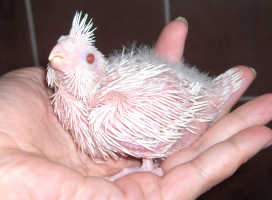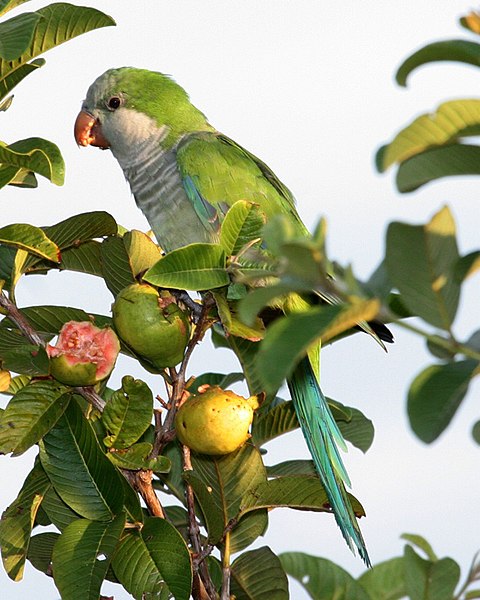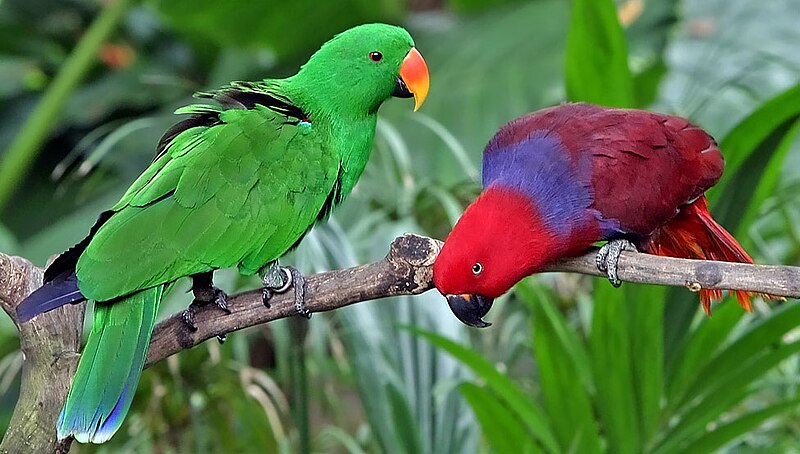Parrots that pair up well, mate, hatch eggs and feed their chicks are every bird-breeders dream. However, some such birds present us with a frustrating situation – just as the chicks begin to grow feathers, one or both of the otherwise doting parents begin to pluck at their chicks’ feathers. Bleeding and skin bruising follow, and, while the chicks usually recover, they are often left high-strung and nervous. Chicks housed in outdoor aviaries may suffer from exposure and chilling as well.
The Scenario

Chick-plucking is most commonly observed among peach-faced lovebirds, budgerigars and cockatiels (particularly lutino cockatiels). Attacks on the plumage usually commence when the feathers first emerge from the skin, and may continue until the time they unfurl. Oddly, the erring adults continue to feed their offspring throughout, and remain good parents once the plucking ceases.
Unfortunately, chick-plucking parents usually do not change, and subsequent offspring are usually attacked as well; there is also evidence that chicks born to “plucking parents” repeat the cycle when they mature and reproduce.
A Theory
The most likely explanation for this perplexing behavior is that it results from frustrated attempts by the parents to preen the emerging feathers. Unable to perform this task properly on the thin, unfurled plumage, the anxious parents begin pulling at the feathers. The fact that most attacks are confined to the chicks’ napes and upper wings – areas not reachable by the chicks and usually attended to by the parents, lends support to this theory.
Thwarting Attacks
 Bitter Apple Spray is often successful in deterring plumage attacks, but is best applied before plucking begins. If the chick’s skin is broken, consult your veterinarian before applying Bitter Apple or similar products.
Bitter Apple Spray is often successful in deterring plumage attacks, but is best applied before plucking begins. If the chick’s skin is broken, consult your veterinarian before applying Bitter Apple or similar products.
Further Reading
Captive breeding, while immensely rewarding, is not without its problems. To read about other potential concerns, please see my article Spring’s Affect on Cage Birds.
Lovebird with newborn chicks image referenced from wikipedia and originally posted by Snowmanradio
Whitefaced lutino Cockatiel Chick image referenced from wikipedia and originally posted by Magnus Manske
 That Bird Blog – Bird Care and History for Pet Birds
That Bird Blog – Bird Care and History for Pet Birds

 English Budgerigars, or budgies, are sometimes referred to as “show or exhibition budgerigars”. They are stouter than the “American Budgerigar”, which is also known by the common name of “parakeet”. Both are larger than wild budgerigars – twice as large in the case of the English race.
English Budgerigars, or budgies, are sometimes referred to as “show or exhibition budgerigars”. They are stouter than the “American Budgerigar”, which is also known by the common name of “parakeet”. Both are larger than wild budgerigars – twice as large in the case of the English race. upon the species, pigeons and doves should be provided with pellets, whole wheat bread, chopped kale and other greens and fruit.
upon the species, pigeons and doves should be provided with pellets, whole wheat bread, chopped kale and other greens and fruit.  keeping our avian friends occupied. Among the most useful are those that, provisioned with food, encourage birds to work at obtaining snacks. Known as “
keeping our avian friends occupied. Among the most useful are those that, provisioned with food, encourage birds to work at obtaining snacks. Known as “ Live insects are unbeatable in arousing the interest of finches, white-eyes and most softbills. By allowing mealworms or waxworms to burrow into a pan of sand or oatmeal, you can keep you pets happily hunting for hours. Crickets are even better, especially if you stock the cage bottom with empty paper towel rolls in which the insects can hide. Plastic wrap wound around the lower 2 inches of the cage bars will help contain any crickets that escape your pet’s notice.
Live insects are unbeatable in arousing the interest of finches, white-eyes and most softbills. By allowing mealworms or waxworms to burrow into a pan of sand or oatmeal, you can keep you pets happily hunting for hours. Crickets are even better, especially if you stock the cage bottom with empty paper towel rolls in which the insects can hide. Plastic wrap wound around the lower 2 inches of the cage bars will help contain any crickets that escape your pet’s notice. Many consider the eclectus to be the most beautiful of all parrots. In fact, early in their avicultural history folks rarely tried to teach eclectus to speak…surely such a gorgeous bird could not also be a talented mimic.
Many consider the eclectus to be the most beautiful of all parrots. In fact, early in their avicultural history folks rarely tried to teach eclectus to speak…surely such a gorgeous bird could not also be a talented mimic.